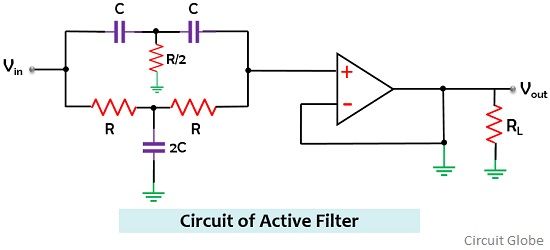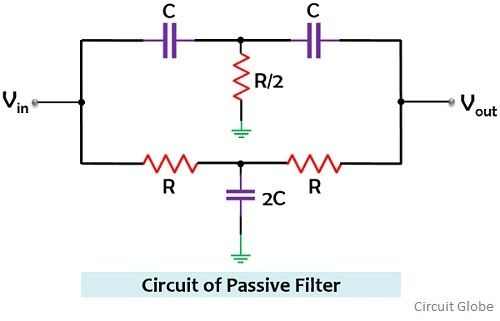The major difference between active and passive filter is that an active filter uses active components like transistor and op-amp for the filtering of electronic signals. As against, a passive filter uses passive components like resistor, inductor and capacitor to generate a signal of a particular band.
Another major difference between the two is that an active filter needs an external source of power for its operation. While no external source is needed in case of passive filters.
We know filters are the circuits that have the ability to pass a particular frequency band through it while rejecting the other frequencies outside the band. Filter circuits basically exhibit the property of frequency selectivity. We will discuss some more differences between the two.
Content: Active Vs Passive Filter
Comparison Chart
| Basis for Comparison | Active Filter | Passive Filter |
|---|---|---|
| Composed of | Active components like op-amp, transistor etc. | Passive components like resistor, inductor and capacitor etc. |
| Cost | High | Comparatively low. |
| Circuit complexity | More complex | Less complex than active filter. |
| Weight | Low | Comparatively bulkier due to presence of inductors. |
| Q factor | High | Very low in comparison to active filters. |
| External power supply | Required | Not required |
| Sensitivity | More sensitive | Comparatively less sensitive. |
Definition of Active Filter
Active filters are those filter circuits that are designed using transistor and op-amp as their basic components. Along with these elements circuits of active filters also contain resistor and capacitor, but not inductors.
We know filter exhibits the property of frequency selectivity. Thus active filter circuits use transistor and op-amp to pass only a selective band of frequency while attenuating rest of the frequency.
The figure below shows the example of a circuit of an active filter:
In case of active filters in order to generate the required filter characteristic, the interconnection of the op-amp, integrator, invertor etc. with resistor and capacitor are formed.
Usually, the op-amp in the circuit is used in an integrated manner. Thus ensure small size and less bulky. We know op-amp offers high input impedance and low output impedance. Thus such active filters eliminate the loading effect at source and load.
But active components offer finite bandwidth thus it sometimes leads to cause difficulty in operation of the high-frequency signal. Also, the need for an external dc source is present in case of the active filtering unit because it cannot take the driving power from the signal at its input.
Definition of Passive Filter
Passive filters are the filter circuits that are formed using only resistor, inductor and capacitor as their major components. As no amplifying element is present in it thus passive filters offer low signal gain. This leads to the reception of the comparatively low signal at the output of the filter circuit than the applied input signal.
Let us have a look at the circuit of a passive filter:
For radio frequency range, passive filters offer a good response. But the presence of inductor in the circuit creates problem in low-frequency applications. As in case of low frequencies, the inductance of the inductor must be increased, that ultimately need more number of turns in the coil.
Below the RF range, both input, as well as the output impedance of passive filters, creates an issue. Thus these are not much suitable for low-frequency operations. Basically, the band of frequency which is allowed and restricted generates the classification of filters.
So, in case the RLC network is passing only lower band of frequency then it is known to be a low pass filter. Similarly, if the filter is attenuating lower frequency band and passing higher band of frequency then it is a high pass filter.
Key Differences Between Active and Passive Filter
- Due to the presence of active components, active filters are expensive. However, the low cost of passive filters is the result of the presence of passive components in it.
- The circuit orientation of active filters is quite complex. While comparatively passive filters have a less complex circuit.
- Active filters possess a high value of quality factor as compared to passive filters.
- Active filters need an external supply of power for circuit operation. But passive filters do not require external energy source because it drives the energy for its operation from the applied input signal.
- As inductor is the basic component used in passive filters and it generates problems at low frequencies. Thus passive filters are suitable for RF range operation. While active filters provide a better response at low frequency.
- The weight of active filters is low while it is comparatively high for passive filters.
- Active components show greater sensitivity towards temperature changes. However, passive components are comparatively less sensitive towards the same.
Conclusion
So, it can be concluded that both active and passive filters have their own region of operation. But active filters are used more than passive filters like in the field of communication and signal processing.



nice